Chicken Skin Under Eyes: What It Is, Causes & Treatment

People often experience common problems like chicken skin under their eyes. Some factors, including dehydration, lack of sleep, and allergies, can cause this. Chicken skin under eyes can also signify A more severe condition that affects the skin, such as eczema or psoriasis.
If you’re dealing with chicken skin under eyes, a few things can help you try and improve the condition. First, ensure you’re drinking enough water and getting enough sleep. You can also moisturize the air by using a humidifier in your home. If your chicken skin is due to allergies, over-the-counter antihistamines may help. You’ll need to see a doctor for treatment if you have eczema or psoriasis.
Chicken skin under eyes is a common problem, but it doesn’t have to be permanent. With the right lifestyle changes and treatment, you can improve the condition and keep it from returning.
WHAT CAUSES BUMPS UNDER THE EYES
Allergies, dehydration, or a buildup of toxins often cause bumps under the eyes. Often, these bumps are harmless and will go away on their own. However, if they are causing you pain, you should see a doctor, especially if it doesn’t go away after a few days.
This can lead to the formation of tiny bumps called ‘papules.’ Other common causes of bumps under the eyes include:
• Genetics: If you or someone in your family has a history of bumps under the eyes, you are more likely to develop them yourself.
• Underlying medical conditions: Bumps under the eyes can sometimes indicate an underlying medical condition such as thyroid disease or an infection.
However, in some rare cases, this may be a basal cell carcinoma, a skin cancer. This type of cancer is slow-growing and is not usually fatal. However, it can cause damage to the surrounding tissue.
You can do a few things to avoid tiny bumps under the eyes. Avoid triggers such as dust, pollen, and pet dander if you have allergies. You can also stay hydrated by drinking plenty of water and avoiding diuretics such as caffeine. Finally, be sure to cleanse your skin regularly to remove any buildup of toxins.
HOW DO I GET RID OF CHICKEN BUMPS ON MY SKIN?
Chicken bumps, also known as chicken skin or keratosis pilaris, is a common skin condition caused by a buildup of Keratin. It usually appears on the thighs, cheeks, upper arms, or buttocks as small red bumps that may feel itchy and dry. This unsightly condition can be embarrassing; many want to know how to eliminate chicken bumps. Fortunately,there are several effective treatments available that can help reduce the appearance of these pesky bumps.
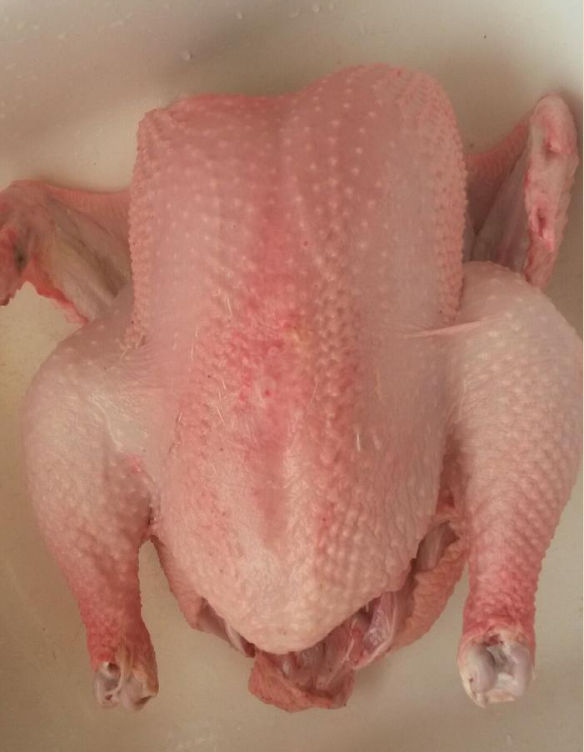
What are the possible treatment options for removing chicken bumps on the skin?
1. Exfoliation:
: Exercising your skin can help reduce the appearance of chicken skin bumps. Look for an exfoliator that contains lactic acid or salicylic acid, which slows off dead skin cells and helps unclog pores.
2. Moisturizing:
Keeping your skin moisturized is critical when treating chicken skin bumps. Choose a moisturizer that contains urea, lactic acid, glycolic acid, shea butter, or ceramides; ingredients help keep your skin hydrated and healthy while reducing the appearance of keratosis pilaris.
3. Topical Treatments:
There are several topical treatments available for people suffering from chicken skin bumps, including retinoids (e.g., tretinoin), alpha hydroxy acids (AHAs), corticosteroids, salicylic acid, and hyaluronic acid creams/lotions. These treatments can be used independently or in combination with other therapies to improve symptoms of keratosis pilaris over time.
4. Laser Treatment:
For more severe cases of chicken skin bumps, a doctor or dermatologist may recommend laser treatment as it can help reduce redness and inflammation associated with keratosis pilaris while promoting smoother-looking skin texture overall.
3 CAUSES OF CHICKEN SKIN UNDER EYES
Suppose you are concerned about the chicken skin under your eyes. The good news is that some effective remedies can help improve the overall skin appearance. Other common causes of chicken skin under the eyes include stress or a lack of certain nutrients.
The most crucial step is to exfoliate your skin regularly. This will help to exfoliate and remove dead skin cells, allowing new skin cells to grow in their place. A good exfoliating product will also help improve your skin’s circulation, which can reduce the appearance of chicken skin.
In addition to exfoliating, some other effective remedies can help improve chicken skin’s appearance. These include using moisturizing creams on the affected area to help soothe the skin, taking supplements, and using natural oils. You should always consult a dermatologist to get the most accurate information cause and determine the best course of treatment. You can start by drinking plenty of water to stay hydrated.
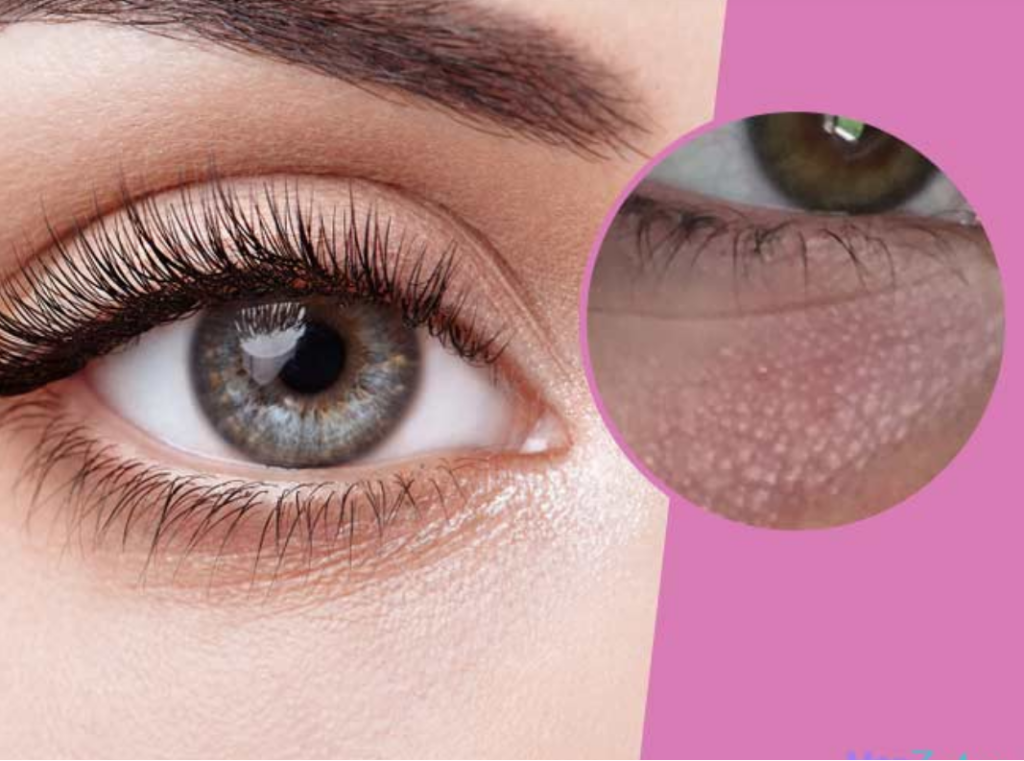
UNDER-EYE SKIN CONCERNS
Under eye, skin concerns are common among both men and women. Some factors, including stress, lack of sleep, and exposure to the sun, can easily damage the delicate skin around our eyes.
Some ways to treat under-eye skin concerns include creams, serums, and masks. They can help you find the best way to care for your under-eye skin. Talk to your dermatologist or esthetician to help determine which treatment is proper for you.
Genetics, lifestyle choices, and skin type are the three most common under-eye skin concerns. If you have a genetic predisposition to under-eye bags, dark circles, or swelling, there is, unfortunately, not much you can do to change that. However, you can make lifestyle choices that improve the appearance of your under-eye skin; Getting enough sleep to stay healthy, eating a healthy diet, and managing stress levels is essential. Additionally, if you have dry or sensitive skin, an eye cream designed for your skin type can help hydrate and soothe the delicate skin around your eyes.
WHAT ARE COMMON MEDICAL TREATMENTS FOR CHICKEN SKIN UNDER EYES?
There are a few typical medical treatments for chicken skin under eyes. One is to use a topical retinoid, which exfoliates the skin and can help to improve the appearance of chicken skin. Another standard treatment is laser or light therapy, which can help destroy the abnormal cells that cause chicken skin. Finally, some doctors may also recommend surgery to remove the chicken skin.
While there are a variety of medical treatments for chicken skin under eyes, the most effective treatment depends on the underlying cause. Supplements may be recommended if the chicken skin is due to a deficiency. Antihistamines may be prescribed if the chicken skin is due to an allergy. Various creams and ointments may be prescribed for chicken skin caused by a skin condition. Ultimately, a doctor or other medical professional will determine the best course of treatment.
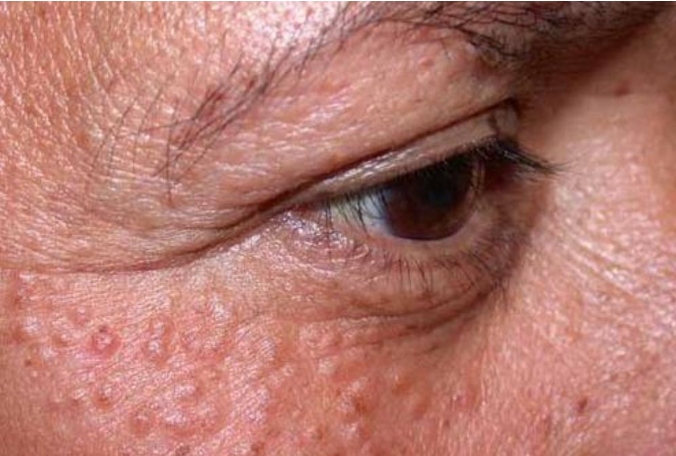
THE BEST WAYS TO PREVENT CHICKEN UNDER EYES
Various factors, including genetics, dehydration, and sun damage, cause chicken skin under eyes. There are many ways to prevent chicken skin under eyes, but not all are created equal. Some methods may work better for some people, so finding a suitable manner is crucial.
One of the best ways to prevent chicken skin under eyes is to hydrate your skin. This can be done by drinking plenty of water and using a moisturizer on your skin. You should also avoid exposure to the sun and use sunscreen outdoors. If you have chicken skin under eyes caused by genetics, some treatments can help reduce the skin’s appearance. These treatments include laser therapy, microdermabrasion, and retinoids.
Taking care of the skin under your eyes is vital to keep it healthy and prevent chicken skin. Deroofing is a simple and effective way to do this. Dead skin cells that can be removed build up and cause chicken skin. Exfoliating, using a mild cleanser, and using a good eye cream can also help to prevent chicken skin under eyes.
#4 REASONS FOR CHICKEN SKIN UNDER EYES: KERATOSIS PILARIS - CHICKEN SKIN
Keratosis pilaris is a benign genetic condition that affects millions of people worldwide. The situation is characterized by small, hard bumps that often appear on the upper arms, legs, and buttocks. These bumps are caused by an overproduction of Keratin, a fibrous protein that provides structural support and protection for the skin. Keratin helps to keep the skin healthy and prevents infection.
While keratosis pilaris is harmless, it can be unsightly and cause itching and irritation. These treatments are available to help improve the appearance of the skin and reduce the symptoms.
Here are four reasons why you may have chicken skin under your eyes:
- You have keratosis pilaris.
If you have small, rough bumps on your skin that look like goosebumps, you may have keratosis pilaris. This condition is harmless, but it can be unsightly and sometimes itchy. Keratosis pilaris occurs when the body produces too much Keratin, a protein that helps protect the skin. This excess Keratin creates a blockage in the hair follicles, resulting in the formation of small bumps.
Keratosis pilaris is very common, and it often runs in families. The condition usually appears in late childhood or adolescence and often improves with age. There is no cure for keratosis pilaris currently available at this time, but there are treatments that help improve the skin’s appearance. If you are worried about the bumps on your skin, talk to your doctor or a dermatologist.
2. You have dry skin.
Do you have dry skin? Do you find that your skin is flaky, itchy, or cracked? Do you have fine lines or wrinkles? If so, you are not alone. Millions of people suffer from dry skin.
The good news is there are, fortunately, a few things you can do to help alleviate your dry skin. One of the best effective treatments is to use a moisturizer. By trapping water in your skin, moisturizers can help to reduce dryness and improve your skin’s appearance.
Another thing you can do is to avoid using soap on your dry skin. Soap can strip away the natural oils, worsening your dry skin. If you must use soap, use a gentle, fragrance-free soap.
Chicken skin is a condition that causes small, raised bumps to form on the skin. A lack of moisture in the skin often drives it. If you have dry skin, moisturize regularly to prevent chicken skin from forming. You may be more likely to develop chicken skin under your eyes if you have dry skin.
- You are using harsh makeup products.
Use harsh makeup products if you have chicken skin under your eyes. Chicken skin is a condition caused by damage to the skin’s collagen and elastin. Many things, including the overuse of harsh makeup products, can cause this.
Suppose you have chicken skin under your eyes. In that case, it is vital to protect sensitive skin that requires special care, keep your skin looking its best, use a gentle cleanser and avoid harsh makeup products, and use a soothing moisturizer, switching to a softer alternative. Many gentle makeup products on the market will not cause chicken skin when searching for hypoallergenic or non-comedogenic; avoid products containing alcohol, fragrance, and other harsh chemicals.
It has been concluded that using harsh makeup products significantly contributes to Keratosis pilaris. These products strip the skin of natural oils, leading to dryness and irritation. In some cases, this can also cause inflammation and bumps on the skin. If you are using harsh makeup products, switching to gentler, more natural products is vital to avoid
these problems.
4. You have an allergy.
Allergies are medical conditions caused by the immune system that can overreact to a harmless substance that is harmless to most people. This substance is known as an allergen. When you have an allergy, you may experience symptoms ranging from mild to severe.
There are many types of allergies, which various things, such as dust mites, pollen, certain foods, and pet dander, can trigger. Some people may even have an allergy to the chicken skin under their eyes.
Allergies can be severe, so if you think you may be experiencing any symptoms, you must seek a professional medical doctor to get a proper diagnosis and treatment. Some of the essential things are the most common allergy symptoms.
Allergies to the chicken skin under the eyes are relatively rare. However, they can occur in people sensitive to specific proteins in chicken skin. Symptoms of an allergy may include itching, redness, and swelling of the eye area. If you’re concerned about a possible chicken skin allergy, you must see an allergist for proper diagnosis and treatment.
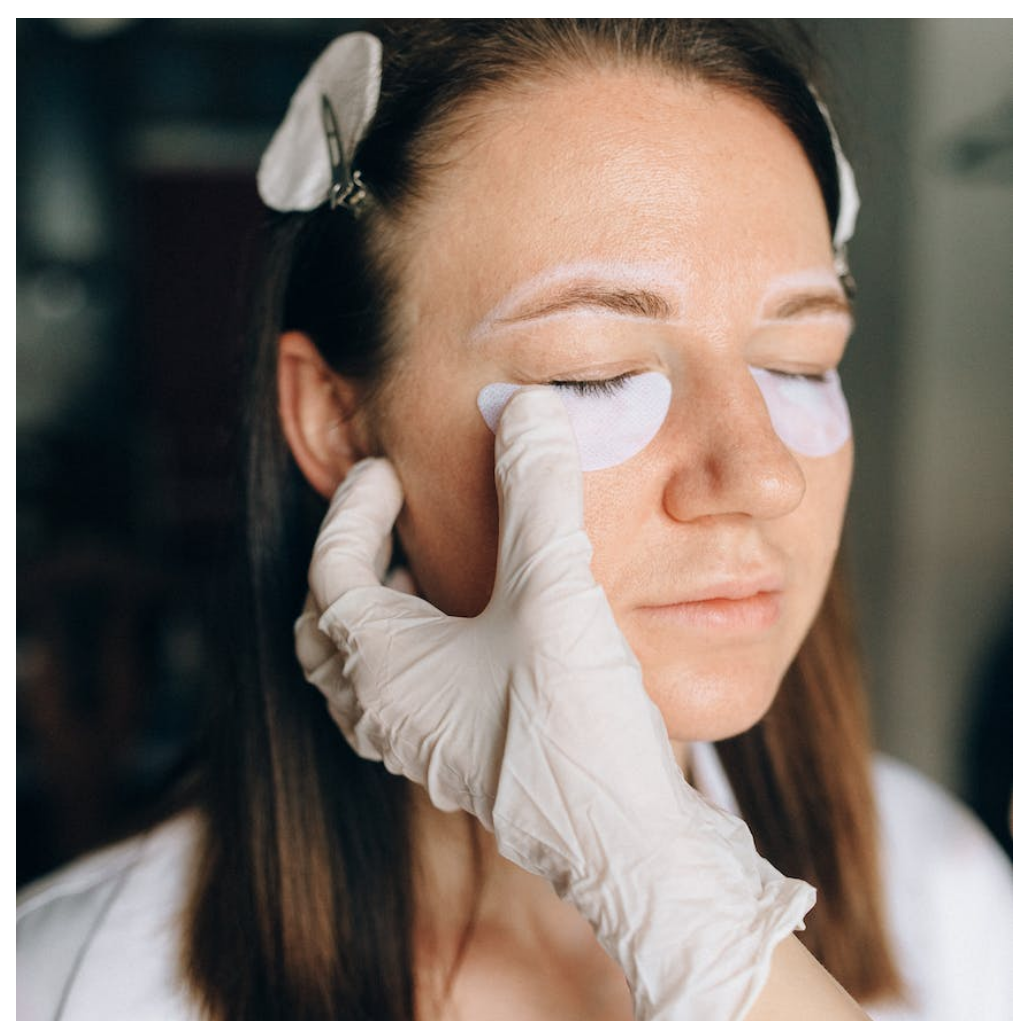
MILIA
Milia are tiny white bumps that can occur on the face, often around the eyes. They are commonly known as “chicken skin” due to their resemblance to chicken skin. Milia are formed when Keratin (a protein found in the skin) becomes trapped under the skin’s surface.
Milia are relatively common and can occur in both adults and children. They are not harmful and do not usually cause any discomfort. Milia typically disappear on their own after a few weeks. However, if they are bothersome, there are many ways to eliminate them.
One option is to use a sterile needle to puncture the bump and release the trapped serum. Another option is to use a comedones extractor, a tool that can help remove the blemishes. If home treatment methods are ineffective, you may need to see a dermatologist for further treatment.
RETINOL FOR CHICKEN SKIN
commonly used in skincare products known as retinol is a form of vitamin A. It is known for its anti-aging properties and is often used to improve fine lines and wrinkles. Chicken skin is a condition that is characterized by rough, bumpy skin. A buildup of Keratin, a protein in the skin, usually causes it.
While chicken skin and retinol are not typically associated with each other, research has shown that retinol will help improve the appearance of chicken skin. In one study, participants who applied a retinol cream to their skin twice daily for 12 weeks experienced a significant improvement in the formation of their chicken skin.
If you have chicken skin and want to improve its appearance, consider using a skincare product that contains retinoids. Retinoids are a vitamin A that can help enhances skin texture and minimize the appearance of chicken skin. Several skincare products on the market contain retinoids, so contact your doctor or dermatologist to see if this is the right treatment option.
You may experience irritation or redness when using retinoid products, but this usually disappears after a few days.
If you have dry or irritated skin, consider using a moisturizer or cream containing ceramides. They are a type of lipid that helps lock in moisture for hydrated, healthy-looking skin. Several skincare products on the market contain ceramides; contact your doctor or dermatologist to see if this is the right treatment option. In general, it’s best to avoid scrubbing or exfoliating chicken skin. This can irritate the skin.
Retinol is an excellent option if you’re looking for a natural treatment for chicken skin. Retinol works by increasing cell turnover and helping to repair the skin barrier. This can help improve the chicken skin’s appearance and make it more smooth and hydrated.
You can use retinol to treat chicken skin in a few different ways. You can apply it to the affected area, use it in a lotion or cream, or take it orally. You should start with a low concentration of retinol and increase it slowly over time. It is essential to consult with a medical professional before using retinol, as it can cause side effects like dryness, redness, and irritation.
While retinol is generally safe to use, there are some side effects that you should be aware of before using it. These side effects include dryness, redness, and peeling of the skin. If you have challenges or any adverse effects, stop using the product and consult a medical professional immediately. The side effects of retinol for chicken skin are usually only temporary and subside within a few days. However, if you experience severe side effects, you should consult a doctor immediately.
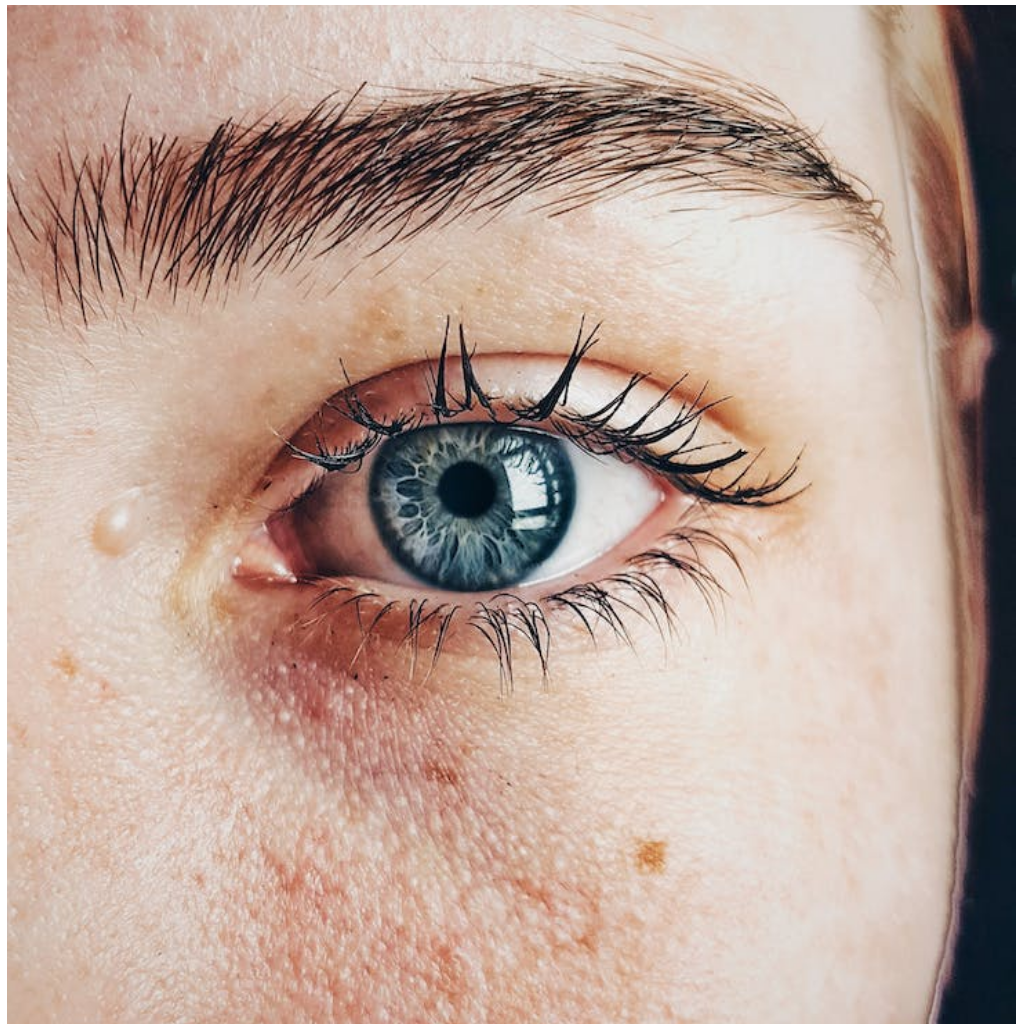
MICROABRASION
Microabrasion is a process by which the top layer of skin is removed using a high-pressure stream of water. It is a form of exfoliation used to improve the appearance of the skin. Microabrasion can treat several conditions, such as acne scars, wrinkles, fine lines, chicken skin under eyes, and more.
This treatment is non-invasive and has very little recovery time, an excellent way to improve your skills and abilities
and the appearance of the skin with minimal risk of side effects.
What are the benefits of microabrasion?
Microabrasion works by gently sanding the surface of your skin to remove the top layer of dead skin cells. This reveals the healthier, more youthful skin underneath. Microabrasion can be done with or without anesthesia, and there is usually minimal pain and downtime associated with the procedure.
If you are considering microabrasion, it is vital to be aware of the possible advantages and disadvantages of the procedure. Some of the potential benefits of microabrasion include the following:
– Smoother, more youthful-looking skin
– Reduced appearance of fine lines and wrinkles
– Reduced appearance of age spots,
sun damage, and other types of skin discoloration
– Reduced appearance of scarring, including acne scarring
– Reduced appearance of enlarged pores
– Enhanced absorption of skin care products
The potential risks associated with microabrasion include:
– Skin irritation
– Infection
– Reactivation of cold sores
– bruising
– Swelling
– redness
– Temporary changes in skin color
Before undergoing microabrasion, discuss the potential benefits and risks with your doctor to see if the procedure is proper.
How is microabrasion performed?
The microabrasion procedure involves using a handheld device to remove dead skin cells at the top layer of the skin through the exfoliation skin’s surface. Fine, sandy grit is used to gently sand away the damaged skin cells, revealing new, healthy skin cells. The procedure is relatively quick and typically takes less than 30 minutes; no downtime is required afterward. However, some redness and swelling may occur immediately after the system, which usually subsides within a few hours.
Microabrasion is a process of exfoliation that involves using fine sandpaper or other abrasive material to remove the
top layer of skin. This can improve the appearance of chicken skin under the eyes. The procedure is relatively simple and can be performed by a qualified aesthetician.
However, it is essential to note that microabrasion is not suitable for everyone. For example, people with dark skin may experience unwanted side effects like hypopigmentation. It is vital to get medical advice to determine whether or not the procedure is proper for you.
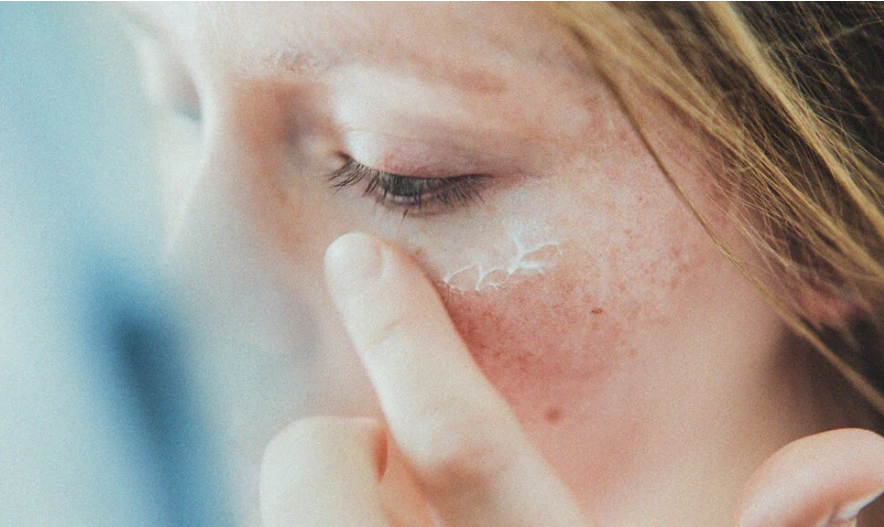
Is microabrasion right for me?
If you are considering microabrasion, consult a dermatologist or other skin care professional; if you’re concerned about your skin, determine if it is the proper treatment. This is because microabrasion can sometimes cause side effects, such as redness, swelling, and bruising.
Overall, microabrasion is a safe and effective way to improve the appearance of your skin. Microabrasion may be suitable if you are looking for a minimally invasive way to achieve brighter, smoother skin.
What to Expect:
This in-office procedure takes about 20 minutes. You will softly rub your skin with a spinning instrument tipped with fine particles for treatment.
Most patients report short-term discomfort and redness that quickly resolves. Post-care instructions are needed and will be discussed with you before treatment.
For best results, we recommend that you receive multiple microabrasion treatments. We usually recommend a series of 4-6 treatments, scheduled at 4-6 week intervals.
After microabrasion, you will notice a decrease in fine lines, pore size, and hyperpigmentation. The effects are temporary; however, you can prolong your results by using sun protection, moisturizing your skin, and avoiding direct sunlight whenever possible.
USE A HUMIDIFIER
Do you suffer from itchy, dry skin? Do you have eczema or psoriasis? If so, you will benefit from using a humidifier. The humidifier is a great way to increase the relative humidity in your home.
Many different types of humidifiers can be used for various purposes. Some people use humidifiers to relieve the symptoms of allergies, colds, and flu. Others use them to humidify the air in their homes to prevent static electricity or to protect their furniture from drying out.
One common symptom people experience during the winter is dry skin. The air is colder and drier, which can lead to skin that feels tight, itchy, and flaky. In extreme cases, dry air can even cause cracks in the skin. One way to combat this is to use a humidifier in your home. A humidifier increases the amount of water vapor in the air. This can help alleviate dry skin by increasing the humidity in your home.
If you have eczema, psoriasis, or dry skin, a humidifier can help to relieve your symptoms. Dry air can worsen these conditions, but a humidifier can help moisten and reduce the dryness that exacerbates these conditions.
A GOOD MOISTURIZING ROUTINE
An excellent moisturizing routine is vital for people of all skin types but is significant for those with dry skin. Dry skin can lead to many problems, including flaking, redness, and even chicken skin under eyes.
Some factors can contribute to dry skin, including weather, diet, improper skin care, and beauty products. Fortunately, there are also several things that you can do to combat dry skin. The vital is good moisturized routine tips on achieving hydrated, healthy skin.
A good skincare routine is vital for keeping your skin healthy and hydrated. Cleanse your skin gently with a mild to get rid of dead skin cells, exfoliate frequently, and use a cleanser. In addition, use a moisturizer liberally, and apply it to your skin while it is still damp from cleansing. For extra hydration, consider using a hyaluronic acid serum. Finally, protect your skin from the sun by using a broad-spectrum sunscreen.
Drink plenty of water and develop an excellent routine to keep your skin healthy, moisturized, and hydrated. Rose water is a natural product that has numerous benefits for the skin. It can be used to cleanse, tone, and moisturize the skin. It is also an effective use of home remedies for several skin problems, such as acne, eczema, and wrinkles.
In addition to a good skincare routine, you can combat dry skin by drinking plenty of water and eating a healthy diet. Be sure to include salmons, seeds, and nuts high in omega-3 fatty acids. Also, use a humidifier in your home to help add moisture to the air.
There are some reasons why bumpy skin under the eyes is a common problem that can be caused by several factors, ranging from genetics to lifestyle choices. For example, you can try home remedies or over-the-counter treatments and use a warm compress on the area.
.